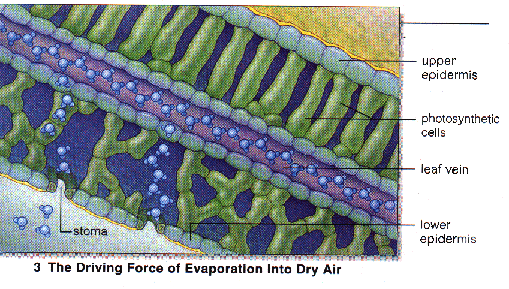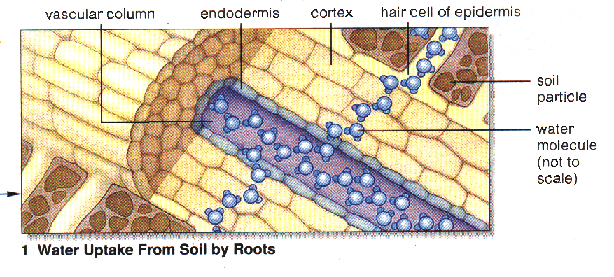Transpiration
Transpiration is the release of water vapor from the leaves of a plant. The
water loss generally occurs through the stomata on the leaf surface.
1. The drying power of the air causes transpiration or water evaporation from
the leaf stomata. This water loss puts the water within the xylem in the leaf
in a state of tension. This tension extends from leaf, through the stem, into
the young roots where water is absorbed.

2. The hydrogen bonds between individual water molecules in the xylem is a
strong force. This force of attraction between the water molecules is known
as cohesion. As water molecules escape via the stomata, they pull on the water
molecules behind them via the "sticky" hydrogen bonds. This pulls
the water upwards all the way from the leaf xylem all the way down to the water
within the root.
90% of the water enering the leaf is lost by transpiration through the stomata.
Only 2% actually is used for photosynthesis and maintaining the cells.

The diagram above illlustrates the cohesive Hydrogen bonds
between water molecules within the xylem of the stem.

Osmosis also helps move water from high concentration (outside the root) to
lower concentration within the root. The transpiration process occuring in the
leaves helps continuously lower the water concentration within the roots by
removing some of the water there.
Animations
LabBench:
Guard Cell Function
The
Last Straw: Water Transport Animation
KScience - Transpiration
Long & Slichter



